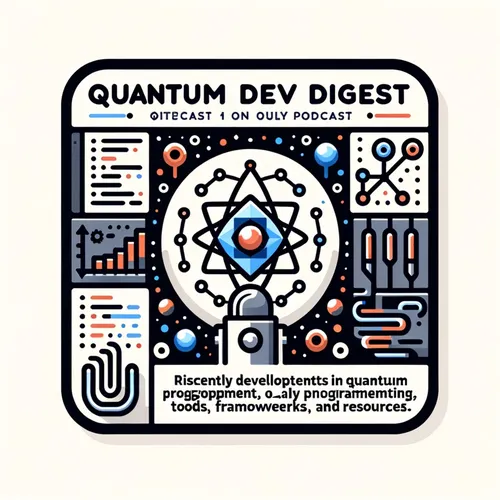D-Wave's Quantum Leap: Solving Real-World Problems in Minutes
- Author
- Quiet. Please
- Published
- Sun 13 Apr 2025
- Episode Link
- https://www.spreaker.com/episode/d-wave-s-quantum-leap-solving-real-world-problems-in-minutes--65557165
This is your Quantum Dev Digest podcast.
Hello, quantum enthusiasts, and welcome back to *Quantum Dev Digest*. I’m Leo, your Learning Enhanced Operator and guide to the mesmerizing world of quantum computing. Buckle up—because today, we’re diving into a groundbreaking achievement that could redefine the limits of computation.
Just a few days ago, D-Wave Quantum made headlines by claiming a historic milestone in quantum computing: **quantum supremacy** on a *useful problem*. Let me paint you a picture. Imagine trying to simulate the magnetic properties of a complex material—a key challenge for materials science. A classical supercomputer would take nearly **a million years** to solve this, consuming the world’s annual electricity in the process. But D-Wave’s quantum annealer? It nailed the solution in mere minutes. Minutes! That’s not just a breakthrough—it’s a giant leap toward practical quantum applications.
Now, I know what you’re thinking: "Leo, haven’t we heard claims of quantum supremacy before?" Indeed, we have—but here’s where this is different. Previous demonstrations often solved contrived problems with little real-world relevance, like generating random numbers. D-Wave’s achievement, validated in a peer-reviewed paper, tackled a problem directly applicable to designing new materials, unlocking potential advancements in everything from renewable energy to superconductors. Picture this as upgrading from running a hundred-meter dash in the lab to competing—and winning—the Olympics.
Let’s break it down a bit more. What makes quantum computing *quantum*? It all starts with the qubit—the quantum counterpart to the classical bit. While a classical bit is like a light switch, either on (1) or off (0), a qubit can exist in a **superposition** of states—like a spinning coin hovering between heads and tails. This means quantum computers can process vast amounts of information all at once, exponentially outpacing classical systems. But that’s not all. Qubits can also be **entangled**, meaning the state of one qubit is instantaneously linked to another, no matter the distance. It’s like having a telepathic connection across the cosmos—mind-boggling, right?
Here’s an analogy to make this relatable. Imagine you’re searching for a treasure chest in a murky pond. A classical computer, armed with a stick, pokes around one spot at a time—methodical but slow. A quantum computer, on the other hand, tosses a stone into the pond. The ripples spread across the water, revealing the chest’s location instantly. That’s the kind of efficiency we’re talking about—a paradigm shift that doesn’t just rewrite the rules of computation but redefines what’s possible.
D-Wave’s success showcases the power of quantum **annealing**, a specialized approach for solving optimization problems. Unlike general-purpose quantum systems, annealers use quantum mechanics to find the "lowest-energy" solution to complex scenarios. Think of it as sliding marbles into a bowl: the marbles naturally settle at the lowest point, representing the optimal solution. This process is particularly valuable for tasks like simulating material properties or optimizing logistics, where finding the best option among countless possibilities is crucial.
The implications are enormous. With quantum computing, we’re on the cusp of designing better batteries, discovering new medications, and even creating hyper-efficient transportation systems. For example, airlines could use quantum algorithms to optimize flight routes between cities like Sydney and New York, balancing fuel consumption, weather patterns, and timing. The result? Significant cost savings and environmental benefits. It’s like upgrading from a paper map to a GPS that predicts traffic jams before they happen.
But let’s zoom out for a moment. This breakthrough isn’t just about solving scientific puzzles; it’s a definitive rebuttal to...
